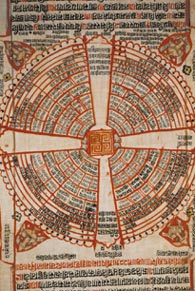With Special Faculty Panel: What Is a Book?
Launching the Year of the Book at the Penn Humanities Forum, Writing Surfaces is a special University of Pennsylvania Library exhibition—an encyclopedic tour of the myriad surfaces humans have used to communicate meaning. From sticks, stones, and bones to papers, metals, and plastics, the human imagination has proliferated an almost limitless supply of surfaces for texts and information.
A panel of distinguished Penn faculty—Peter Stallybrass of English, Shane Butler of Classical Studies, and Millicent Marcus of Italian Studies—opens the exhibition with a discussion of what it means to call something a book.
From Michael Ryan, Director
Annenberg Rare Book & Manuscript Library
When we think of writing, we invariably think of paper— even now in the electronic age. Yet, during the six or so millennia since the appearance of writing, man has been nothing if not fertile in leaving his marks on things. From the walls of caves to electronic disks, we seem to have turned every available surface into a space for communication. Some of these surfaces have been hard and durable, such as the clay tablets used in the ancient near east; some have measurable life spans, such as pulp-based paper; and still others are essentially ephemeral, such as the writing of a plane in the sky or a child in the sand on the beach. Some surfaces derive from organic materials, such as plants and skins, while others are inorganic products, such as glass and plastic. This exhibit presents a modest conspectus of writing surfaces selected almost entirely from the Library’s own collections.
The exhibit makes no claims of exhaustiveness; rather it is meant to suggest something of the range and variety of writing surfaces from antiquity to the present. It is offered as a material context for the Penn Humanities Forum’s Year of the Book. It is also offered as a challenge, a provocation to take seriously the material bases of texts and communication. Talk may be cheap, but writing (largely) endures. However, it endures in different ways, in different genres, on different surfaces. What is the relationship between text and surface? Between the recording and the recorded? Why, finally, are artifacts of writing important?
A number of staff have contributed to this exhibit: Daniel Traister, Arthur Kiron, David Nelson, and above all, Lynne Farrington, who drew the threads together, assembled the material, and had a lot of fun in the process.



